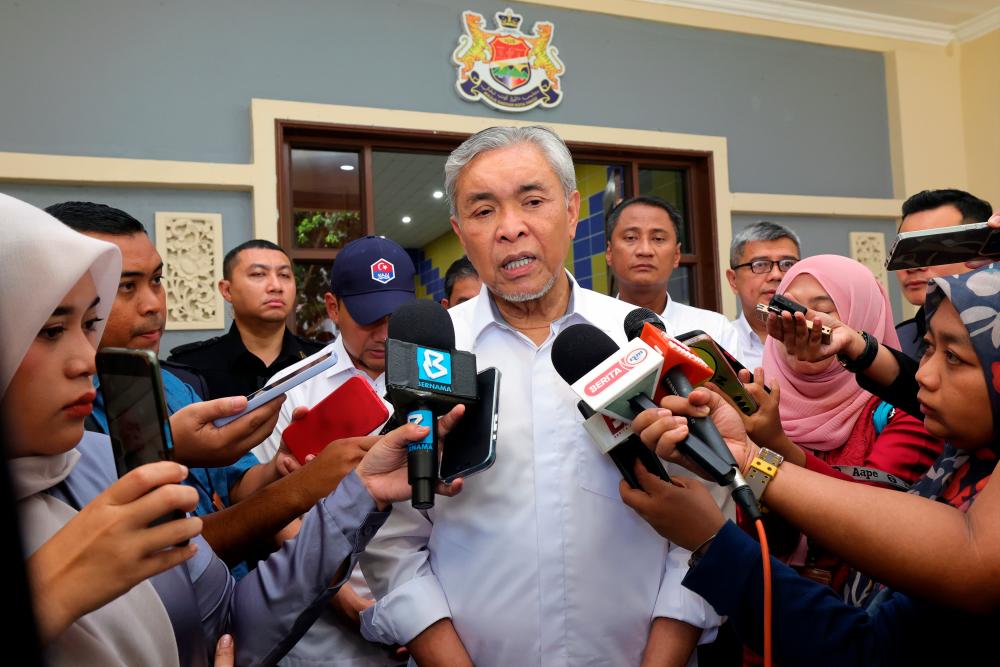KOTA TINGGI: The Department of Irrigation and Drainage (JPS) has identified 4,619 flood hotspots nationwide as part of preparations for the Northeast Monsoon (MTL) this year.
Deputy Prime Minister Datuk Seri Dr Ahmad Zahid Hamidi said continuous flood monitoring would be carried out by JPS through the National Flood Forecasting and Warning Centre (PRABN) with the support of the National Disaster Management Agency (NADMA), the Meteorological Department (MET Malaysia), and the state governments.
He said this included placing 543 flood warning sirens and 737 mobile pumps nationwide, while also suggesting that an allocation be made to purchase more mobile pumps.
He added that JPS would also monitor dams that were more than 50 years old, especially those with large and high water volumes, and identify necessary intervention measures.
“Flood mitigation projects across the country must also be closely monitored to prevent any delays in reducing the impact of floods,“ he said in a statement today.
Earlier, Ahmad Zahid chaired the second Central Disaster Management Committee Meeting for 2024, which was also attended by the state secretaries as the chairmen of their respective State Disaster Management Committee (JPBN) as well as technical and response agencies, here.
As the chairman of the Central Disaster Management Committee, Ahmad Zahid said the Social Welfare Department (JKM) had identified 8,481 temporary evacuation centres capable of accommodating 2.15 million flood victims, while basic amenities would also be given due attention.
He noted that unlimited food assistance would also be provided to those affected by the MTL and other disasters throughout the year, while also urging state governments to immediately distribute funds provided through NADMA to districts, especially those at high risk, to prepare for flooding.
Ahmad Zahid also said that MET Malaysia had informed that the MTL was expected to begin in early November and last until March 2025, with wetter weather expected on the East of the Peninsular, as well as Sabah and Sarawak from November to December this year.
Meanwhile, from January to February 2025, he said wetter conditions were expected in Johor, Sarawak, and Sabah, with the La Niña phenomenon predicted to start at the end of 2024 and continue until mid-2025.
“The risk of major flooding will increase if heavy monsoon rains coincide with high tides and monsoon surges.
“It is expected that there will be five to seven monsoon surges, bringing episodes of heavy and continuous rainfall, particularly in the East Coast of the Peninsular, southern and western Sarawak, as well as northern and eastern Sabah,” he said, adding that rainfall was expected to decrease in the north of the Peninsular beginning in January 2025, and in the eastern parts of the Peninsular from February onwards, followed by hot and dry weather until May.









